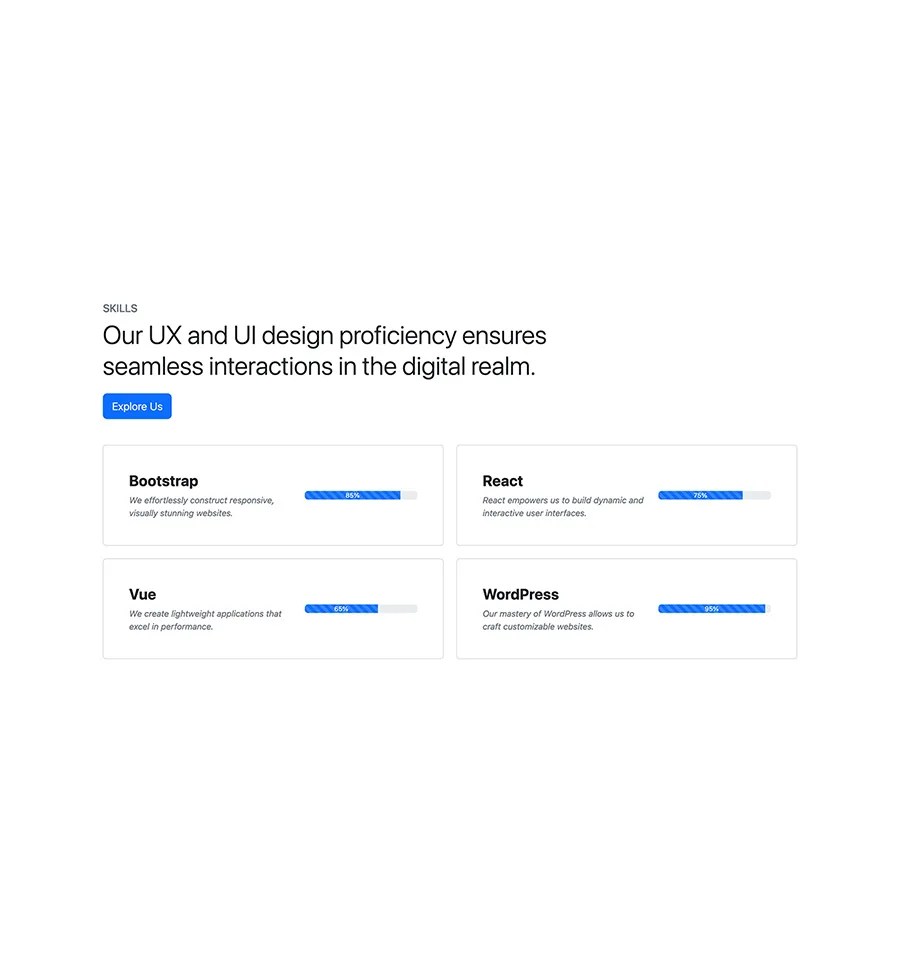Mastering The Progress Bar In Bootstrap: A Comprehensive Guide
```html
The progress bar is a vital component in web development, particularly when utilizing the Bootstrap framework. It serves as an effective visual indicator that allows users to gauge the pace of ongoing processes, such as file uploads, page loading, or any action that requires time. Leveraging Bootstrap’s built-in classes makes it simple to integrate a progress bar into your web project, providing a seamless user experience. In this article, we will explore the intricacies of the progress bar in Bootstrap, including its various features, customization options, and best practices for implementation.
Understanding how to effectively use the progress bar in Bootstrap can significantly enhance your website's interactivity. As web applications become more sophisticated, the need for user feedback grows. A progress bar not only informs users about the progress of a task but also keeps them engaged by signaling that their request is being processed. This guide will walk you through the essentials of creating and customizing progress bars using Bootstrap, so you can elevate the user experience on your site.
Whether you are a beginner or an experienced developer, this article will provide valuable insights into the progress bar in Bootstrap. From basic usage to advanced customization techniques, you will learn how to implement this feature effectively. By the end of this guide, you will have a solid understanding of how to use the progress bar to improve user engagement on your web applications.
What is a Progress Bar in Bootstrap?
The progress bar in Bootstrap is a user interface element that visually represents the progression of a task or process. It is commonly used in scenarios where users need to wait for a specific action to complete, such as uploading files or loading content. The progress bar provides feedback and keeps users informed about how much of the task has been completed.
How to Create a Basic Progress Bar in Bootstrap?
Creating a basic progress bar in Bootstrap is straightforward. Follow these steps to add a simple progress bar to your project:
- Include the Bootstrap CSS and JavaScript files in your HTML document.
- Utilize the `` element with the class `.progress` to create a container for your progress bar.
- Inside the progress container, include another `
` element with the class `.progress-bar` to represent the progress itself.- Set the `style` attribute's `width` property to indicate the percentage of completion.
Here is an example of a basic Bootstrap progress bar:
What Are the Different Types of Progress Bars in Bootstrap?
Bootstrap offers several types of progress bars to accommodate various design preferences and use cases:
- Default Progress Bar: The standard progress bar that displays a solid color representing the progress.
- Striped Progress Bar: A progress bar with a striped pattern that adds visual interest.
- Animated Progress Bar: A striped progress bar that animates the stripes for a dynamic effect.
- Multiple Progress Bars: You can stack multiple progress bars within the same progress container to represent concurrent processes.
How to Customize the Progress Bar in Bootstrap?
Customization is key to ensuring that your progress bar aligns with your website's design. Here are some ways to customize the progress bar in Bootstrap:
- Change Colors: Use Bootstrap’s contextual classes like `.bg-success`, `.bg-info`, `.bg-warning`, and `.bg-danger` to change the color of the progress bar based on the status.
- Adjust Height: You can modify the height of the progress bar using CSS styles. For instance, you can add a custom class with a specific height.
- Adding Text: Display percentage completion text inside the progress bar for better clarity.
What Are Best Practices for Using Progress Bars in Bootstrap?
To effectively use progress bars in Bootstrap, consider the following best practices:
- Keep Users Informed: Ensure the progress bar provides clear and accurate feedback on the task's progress.
- Use Meaningful Labels: Use descriptive labels to explain the task being processed.
- Limit Animation: While animations can enhance user experience, excessive animations can distract users.
How to Implement a Progress Bar in a Form Submission?
Implementing a progress bar during form submissions enhances user experience by showing the processing status. Here’s how you can do it:
- Create a form with an input field and a submit button.
- When the user submits the form, trigger an AJAX request.
- Update the progress bar based on the response received from the server.
This approach provides real-time feedback, ensuring users know the status of their submission.
Conclusion: Why Use the Progress Bar in Bootstrap?
In conclusion, the progress bar in Bootstrap is an essential component for enhancing user interaction on your website. Its ability to visually indicate progress can significantly improve the user experience by providing feedback during long-running tasks. By understanding how to create, customize, and implement progress bars effectively, you can take your web applications to the next level. Bootstrap makes this process simple and efficient, allowing developers of all skill levels to create appealing and functional progress indicators.
```Unlocking The Power Of Global Active Directory
Discovering The Richness Of Etag Food: A Culinary Journey
Understanding The Punitive Approach: An In-Depth Exploration

Bootstrap Progress Bar to Showcase Skills BootstrapBrain

BOOTSTRAP 4 ORDER TRACKING PROGRESSBAR WITH ICONS

Bootstrap 4 Progress Bar TAE
Categories
More Posts
- Inside the progress container, include another `